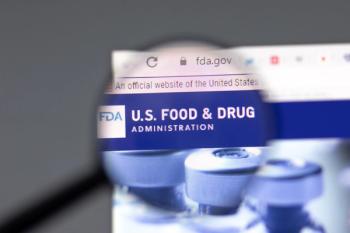
- Applied Clinical Trials-11-01-2006
- Volume 0
- Issue 0
Experts Urge Major Overhaul at FDA
Under IOM's plan, a "lifecycle approach" to drug evaluation would change FDA's pre- and postapproval policies.
The development of more complex therapies to treat chronic illnesses and complex diseases warrants a whole new approach to testing and regulating prescription drugs, according to a much anticipated report from the Institute of Medicine (IOM). Several high-profile drug withdrawals and safety alerts in recent years have undermined public confidence in the Food and Drug Administration and the pharmaceutical industry and raised concerns about the agency's ability to assure the safety of critical medicines, according to a panel of health experts assessing "The Future of Drug Safety." The study says that FDA needs more funding, stronger regulatory authority, and many internal reforms to enhance its ability to monitor and implement changes in drug use after a product comes to market.
Jill Wechsler
"The world has changed" since FDA was established 100 years ago, commented panel member Alta Charo, lawyer and ethicist at the University of Wisconsin. Current agency operations reflect the old model, which focused on screening out highly toxic drugs designed to treat acute conditions. Today most drugs are used by patients with chronic conditions for long periods of time, making it impossible for sponsors to ascertain all possible side effects and safety issues from investigational studies.
Ongoing review
The panel acknowledges that added regulatory requirements could delay patient access to needed therapies and further increase the cost of drug development. But because randomized controlled clinical trials can yield only limited information on the long-term impact of new medicines, these experts advocate a "lifecycle approach" to drug regulation that would soften the sharp line between pre- and postapproval product status. While FDA has considerable clout in shaping clinical trials, drug labeling, and Phase IV study commitments prior to NDA approval, it has limited "tools" for compelling changes and compliance later on. FDA's main recourse is to pull a troubling product off the market or use its "bully pulpit" to sway sponsor behavior, an approach that can be lengthy and ultimately unsatisfactory.
Strengthening Leadership
The recommended remedy lies in an ongoing, periodic review process that authorizes FDA to reassess accumulated safety and efficacy data within five years of product approval. Sponsors would submit reports of accumulated safety and efficacy data, including publications in peer-reviewed journals and updates on postapproval studies.
In addition, the panel proposes to highlight the limited safety experience of a newly approved drug by requiring it to carry a special symbol, similar to the black triangle required for new drugs in the United Kingdom, during the first two years on the market. FDA also would restrict direct-to-consumer advertising during this "black triangle" period, which could be shorter or longer depending on the nature of the product.
Insufficient resources, weak legal authority, and too little data on drugs' risks and benefits make it difficult for FDA to fully evaluate and address postapproval safety concerns, according to these experts from academia and health care organizations. A main challenge for the agency is to establish a regulatory system that better balances resources for postmarket oversight with those for pre-approval assessment.
Interoffice tensions
The current organization foments tensions between the two operations because the Office of New Drugs (OND) in the Center for Drug Evaluation and Research (CDER) has ample resources to assess efficacy data from clinical trials, while the task of reviewing safety and risk information falls to the much smaller and disproportionately underfunded Office of Surveillance and Epidemiology (OSE), formerly the Office of Drug Safety. The resulting "interoffice polarization" has marginalized OSE staffers and produced considerable "friction" between these two review staffs.
Instead of establishing a separate FDA drug safety office, as some members of Congress have advocated, the IOM panel seeks a more integrated regulatory process that would give OSE a more prominent role in CDER approvals and drug oversight. To obtain a more balanced assessment of a product's risks and benefits throughout development and application review, FDA would:
- Assign joint responsibility to OND and OSE for developing and monitoring postapproval regulatory actions related to safety—a move that would strengthen and formalize OSE's role in the approval process.
- Appoint an OSE staffer to the review team for each new drug application (NDA) to review an application's safety section and include OSE early in the review process in determining the scope of Phase IV studies, risk management plans (RiskMAPS), and safety issues in labeling.
- Regularly include OSE staff in regulatory and advisory committee meetings.
- Have advisory committees review all new molecular entities (NMEs) prior to approval or soon after to advise on strategies for managing drug risks.
- Require all advisory committees dealing with drug products to include a pharmacoepidemiologist or other expert on drug safety measurement.
- Add specific safety-related performance goals to the Prescription Drug User Fee Act (PDUFA). These could include increased adverse event evaluation, completion of postmarketing commitments, development of patient information sheets, implementation of RiskMAPS, and review of drug promotional materials, in addition to the above recommendations.
Mandating disclosure
The report also calls for increased access to information on clinical trials, adverse events, and postapproval research to better inform patients and health care practitioners of appropriate drug use. The IOM panel believes that public confidence in FDA's ability to deal with postapproval risk issues has been undermined by delays in disclosure of serious adverse events, excessively long negotiations on label changes, and sponsors' failure to complete promised postapproval studies and to post clinical trial information on public Web sites.
To improve the situation, the report backs a mandate for sponsors to register all Phase II–IV clinical trials on the
In addition, the panel calls for disclosure of study results. Sponsors should post a fairly comprehensive "structured field summary" of safety and efficacy results: primary hypothesis, experimental design, pre-defined outcome measures, sample size per treatment arm, serious adverse events, overview of results, and risk–benefit summary. This data could be posted with the trial listing or on another public Web site. The panel emphasizes that current voluntary listing programs are not enough, and that both trial registration and results disclosure should be "mandatory, systematic, standardized, and complete."
A related recommendation is that FDA post review packages for all NDAs and supplements on its Web site, including those approved before 1998 when new government information disclosure requirements went into effect.
More authority, resources
All these and many other proposed tasks will require a significant increase in FDA's budget along with greatly enhanced legal authority. Legislation is needed for FDA to be able to levy fines and injunctions to compel sponsors to meet postmarketing commitments and to require clinical trial registration and information disclosure.
Additional resources also would support:
- Expansion and improvement of FDA's Adverse Event Reporting Systems (AERS) to make it more useful in postmarketing surveillance
- Increased access to large automated health care databases and more active surveillance of specific drugs
- Funding of confirmatory drug safety and efficacy studies through public–private partnerships
- Expanded FDA staff expertise able to utilize informatics.
The panel emphasizes that Congress needs to increase FDA's appropriated funds to reduce CDER's increased reliance on industry user fees. The user fee program has boosted the perception (if not the fact) that CDER is overly influenced and controlled by the pharmaceutical industry. Only by making significant changes in FDA operations and policies, according to this influential group, can FDA regain public confidence in its regulatory system and decisions regarding drug safety.
Jill Wechsleris the Washington editor of Applied Clinical Trials, (301) 656-4634
Articles in this issue
almost 19 years ago
Building Your Clinical IT Teamalmost 19 years ago
Tough Trials Ahead for Europe's Drug Industryalmost 19 years ago
Recruitment & Consent in Indiaalmost 19 years ago
eShowcase: iPlan Flowalmost 19 years ago
Pharmacogenomics Enters the Japanese Marketalmost 19 years ago
Meet the EAB: Somesh Nigamalmost 19 years ago
Merging eHR & EDC Conferencealmost 19 years ago
Deploying Mobile Devices in Clinical Trials: Part Twoalmost 19 years ago
eShowcase: Clintrace 4.1almost 19 years ago
eShowcase: PharmaReady V3.0Newsletter
Stay current in clinical research with Applied Clinical Trials, providing expert insights, regulatory updates, and practical strategies for successful clinical trial design and execution.






.png)



.png)



.png)
.png)
